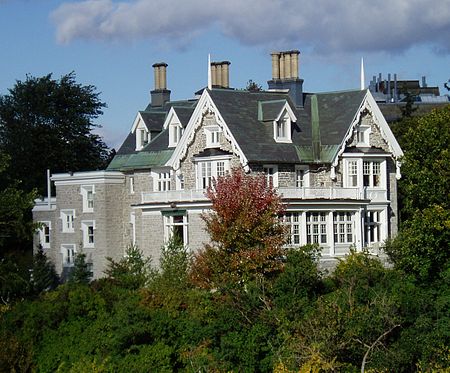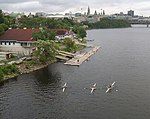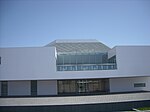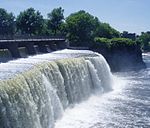Earnscliffe
Canada–United Kingdom relationsDesignated heritage properties in OttawaDiplomatic residences in OttawaGothic Revival architecture in OttawaHouses completed in 1855 ... and 4 more
John A. MacdonaldNational Historic Sites in OntarioSussex DriveUse Canadian English from January 2023

Earnscliffe is a Victorian manor in Ottawa, Ontario, built in the Gothic Revival style. During the late 19th century, it was home to Canada's first Prime Minister, Sir John A. Macdonald. Since 1930, it has served as the residence of the British High Commissioner to Canada.
Excerpt from the Wikipedia article Earnscliffe (License: CC BY-SA 3.0, Authors, Images).Earnscliffe
Sussex Drive, Ottawa Lowertown (Rideau-Vanier)
Geographical coordinates (GPS) Address External links Nearby Places Show on map
Geographical coordinates (GPS)
| Latitude | Longitude |
|---|---|
| N 45.437378 ° | E -75.698912 ° |
Address
Earnscliffe Official Residence British High Commissioner to Canada
Sussex Drive 140
K1A 0G2 Ottawa, Lowertown (Rideau-Vanier)
Ontario, Canada
Open on Google Maps










